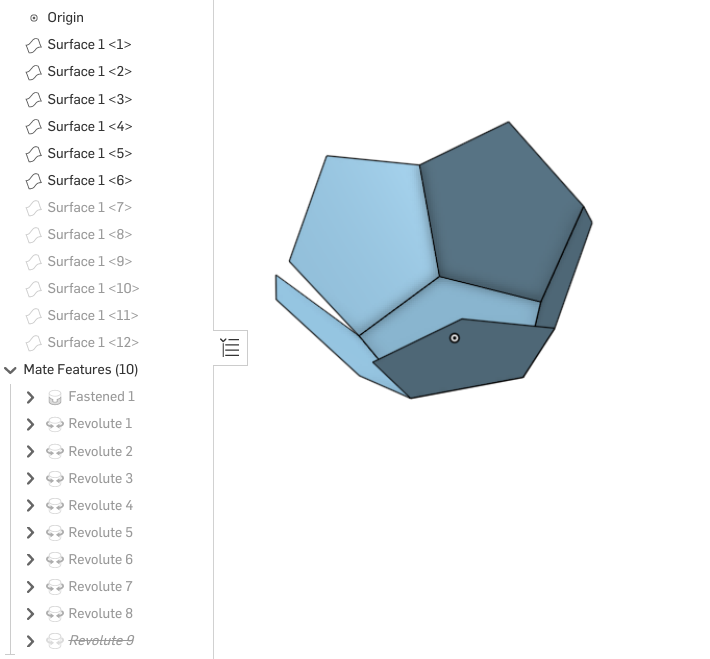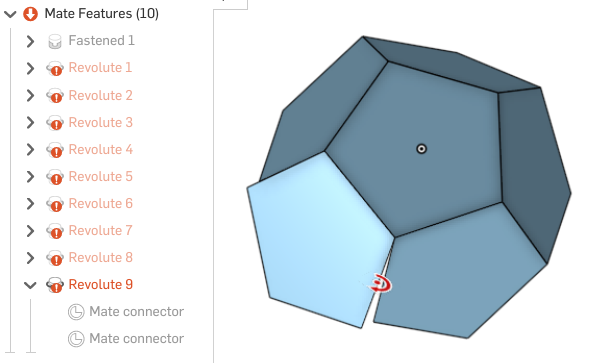Welcome to the Onshape forum! Ask questions and join in the discussions about everything Onshape.
First time visiting? Here are some places to start:- Looking for a certain topic? Check out the categories filter or use Search (upper right).
- Need support? Ask a question to our Community Support category.
- Please submit support tickets for bugs but you can request improvements in the Product Feedback category.
- Be respectful, on topic and if you see a problem, Flag it.
If you would like to contact our Community Manager personally, feel free to send a private message or an email.
Assembly mates Revolute not solvable
 gauthier_östervall
Member Posts: 99 ✭✭
gauthier_östervall
Member Posts: 99 ✭✭
I am trying to create a 12 sided die. The purpose is mostly to learn.
I'm trying to let Onshape calculate the angles, it's something I suppose it's good at. I created a pentagon surface in a part studio, inserted it 12 times in an assembly, and now I'm trying to give the faces some Revolute constraints in the assembly.
It's going well for a while, until I come to closing a half of the dodecahedron. Somehow the constraints are not solvable. I'm not even trying to completely close the last edge, it shouldn't be needed.

Unsuppressing Revolute 9 looks like this:

I think I'm misunderstanding something, but cannot see what.
Here is the project.
I'm trying to let Onshape calculate the angles, it's something I suppose it's good at. I created a pentagon surface in a part studio, inserted it 12 times in an assembly, and now I'm trying to give the faces some Revolute constraints in the assembly.
It's going well for a while, until I come to closing a half of the dodecahedron. Somehow the constraints are not solvable. I'm not even trying to completely close the last edge, it shouldn't be needed.

Unsuppressing Revolute 9 looks like this:

I think I'm misunderstanding something, but cannot see what.
Here is the project.
Tagged:
0
Comments
But trying to tie the last panel with ball mates instead of revolute still confuses the solver. Or me.
I also tried playing with Parallel mates, I had the feeling they'd be even weaker than Ball mates.
Is there an advantage going for parts and not surfaces, like you did?
You're right that parallel mates couldn't work it out. I don't get why though, they should be less restrictive than ball mates?
I could do to halves of the dodecahedron, but not put them together. I did move the surfaces in a position that was close to the desired result. Strangely, when I add a mate (ball mates to as few corners as possible) and the solver fails, removing the new mate leaves the Assembly inconsistent on the first steps...